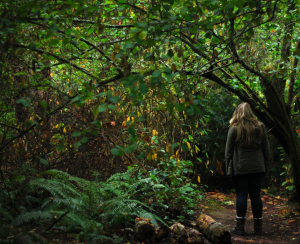Research on student evaluations of teaching suggests that the gender and age bias most colleges pride themselves on avoiding contaminate those evaluations, along with other nonacademic factors — like "sexiness." Since many institutions of higher learning use these surveys to determine whether faculty keep their jobs or get raises, their unreliability matters. But the impact these student reviews have on the quality of education raises even more troubling issues: Students give better evaluations to people who grade them more generously.
Instructors who figure this out could give higher grades to secure tenure or a bigger raise. Grade inflation offers persuasive evidence that some faculty members have succumbed to this temptation. In other words, standards decline, so students learn less as the cost of their education rises. Ironically, this happens because students are now considered customers, so colleges want to keep them happy.
Evaluations encourage students to place total responsibility for the quality of their education on their instructors. I first encountered them in 1968, when I began my first full-time job, as an instructor of American literature. I had just finished a year as a graduate teaching assistant, during which students debated the reading among themselves and did not hesitate to argue with me once class began. I enjoyed these encounters enormously and suspect my students did, too. So, I was shocked in my first American-literature class as an instructor to discover that the students refused to participate in class, even after I threatened them with a longer syllabus unless they did so.
I got a terrible rating, and its publication humiliated me. The ignorant comment that I needed approval so badly that I asked questions and usually accepted and worked with the responses remains imprinted on my brain 50 years later.
As the decades have passed and students have continued to appraise their instructors, they have come to assume that they know at least as much as the people the college asks them to rank; after all, they sometimes don’t do the reading or participate in class, but their grades rise all the same.
In a recent survey of 1,000 faculty members, commissioned by The Chronicle, almost two-thirds of the respondents said they thought students today were harder to teach than those in the past, and they overwhelmingly said that student engagement had gotten worse. Administrators, who are well paid for supposedly assuring that students get good educations, apparently have never heard of grade inflation or bothered to read the studies questioning the value of evaluations, since they routinely turn the job of ranking the faculty over to the people the instructors grade.
Some students understand the implications of all this. When I first told a class that one of the students would have to collect and submit the evaluations so that I couldn’t tamper with them, one of them asked, "Doesn’t that make you feel demeaned?" Another student wrote on an evaluation, "Why don’t you get off your ass and see for yourself what a great job she is doing?" And, indeed, the administration, not the students, should undertake the difficult task of appraising how well a class works. A colleague once remarked, "When we agitated for student evaluations in the ’60s, we never guessed we were handing the administration a club."
Fulbright grants gave me the opportunity to teach at European universities where students do not rate their instructors. That experience brought home the damaging impact of evaluations. The authoritarian instruction that often takes place in Europe has problems, but students complaining about doing the work is not among them.
At the University of Vienna, I arrived convinced that students would pay full attention only to a class conducted in discussion, so I found it uncomfortable to stand at an elevated podium and lecture. But the students not only listened, they reacted so powerfully that I became fixated on making my next lecture better than the last. I resumed this practice when I taught in Belgium and Germany. The more attentive my students, the more enthusiasm I had for teaching as well as possible.
During my teaching assignment in Germany, I invited my students to help themselves to my books at the end of my stay. One student couldn’t believe his luck: I had not yet given away my copy of Barry Lopez’s Arctic Dreams, a book that won the National Book Award. I had stopped teaching it to my American students because so many complained that it bored them.
I have heard American students boast of never doing the reading, as though this certifies their brilliance; why would they bother to study work assigned by their inferiors? And why should American students listen to me when they inform the administration whether I have done my job?
Student feedback can be valuable while the course is in process, but end-of-course appraisals help only administrators who apparently do not understand that any two classes differ because the individuals composing them inevitably have an impact. I am thankful that most students have too much decency and integrity to take revenge for a bad grade by submitting a damning evaluation.
But, ultimately, the unearned arrogance encouraged by the heavy reliance on student evaluations helps produce passive, even contemptuous students who undermine the spirit of the class and lower its quality for everyone. All students deserve better.
Nancy Bunge is a professor emerita in the humanities at Michigan State University.








